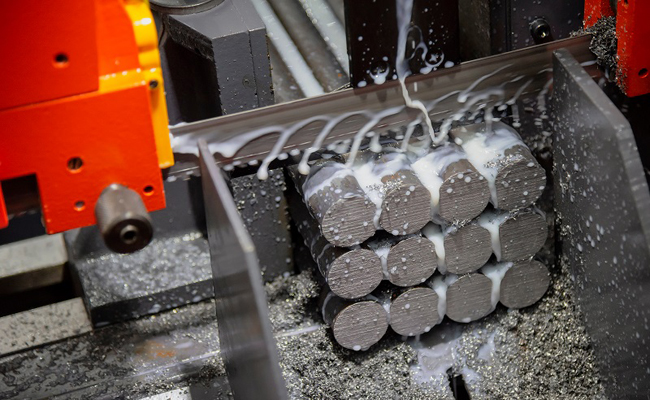SQ-40-1 Cut Off Saw
Cutting Capacity :
The Duel Between Steel and Wood: Technical Differences and Applications of Band Saws in Woodworking vs. Metal Cutting

In modern manufacturing, band saws serve as efficient and precise cutting tools widely used in both woodworking and metal cutting. However, despite sharing a similar core principle, the design, techniques, and operational methods of band saws differ significantly between these two applications due to the distinct properties of the materials. This article examines the technical variations in blade selection, cutting parameters, machine structure, and industrial applications, exploring the engineering logic behind these differences.
1. Blade Selection: The Battle of Tooth Geometry
The physical characteristics of wood and metal dictate fundamental differences in band saw blade design.
Wood Cutting: Large Teeth for Efficient Chip Removal
Wood is softer but has a complex fibrous structure, generating substantial sawdust during cutting. Therefore, woodworking band saws typically use carbon steel or high-speed steel blades with larger tooth spacing (4-8 TPI, Teeth Per Inch) and hook-tooth or skip-tooth patterns to enhance chip clearance and prevent clogging. Additionally, wood-cutting blades prioritize sharpness over wear resistance to minimize splintering.
Metal Cutting: Fine Teeth for Wear Resistance and Heat Dissipation
Metal is harder and more thermally conductive, requiring finer tooth spacing (10-24 TPI) and bi-metal or carbide-tipped blades. The teeth often adopt a wavy set or raker set pattern to distribute cutting forces and improve heat dissipation. Furthermore, metal-cutting blades are often coated (e.g., with TiN titanium nitride) to enhance durability and extend service life.
2. Cutting Parameters: Balancing Speed and Feed Rate
Wood and metal demand vastly different operational settings for optimal cutting performance.
Wood Cutting: High Speed, Low Force for Efficiency
Wood is typically cut at 1000-3000 FPM (feet per minute), relying on high blade speed rather than heavy feed pressure. Since wood generates less heat, coolant is rarely needed, though dense hardwoods (e.g., rosewood) may use air cooling or wax lubrication to reduce friction.
Metal Cutting: Low Speed, High Force for Stability
Metal cutting operates at much lower speeds (100-300 FPM) but requires greater feed pressure to ensure the blade effectively engages the material. Due to high heat generation, cutting fluids (e.g., emulsions or oil-based coolants) are essential to prevent blade wear and premature failure.
3. Machine Structure: Flexibility vs. Rigidity
The mechanical design of band saws also adapts to material-specific requirements.
Wood Band Saws: Lightweight and Versatile
Woodworking band saws often feature open-frame designs to allow flexible angle adjustments (e.g., for curved cuts). Since wood cutting produces minimal vibration, these machines prioritize maneuverability over rigidity but maintain high blade tension (15,000-25,000 PSI) for precision.
Metal Band Saws: Heavy-Duty and Stable
Metal cutting generates significant reactive forces, necessitating fully enclosed cast-iron frames and hydraulic or servo-driven feed systems for consistent performance. Metal saws also require higher blade tension (over 30,000 PSI) and often include automatic chip brushes to prevent debris buildup.
4. Industrial Applications: From Furniture Crafting to Aerospace Engineering
Band saws serve distinct roles in woodworking and metal industries.
Woodworking: Where Art Meets Efficiency
In woodworking, band saws handle everything from straight cuts (e.g., panel sizing) to intricate tasks like scrollwork and joinery. For instance, luthiers use narrow-band saws for precision shaping of guitar necks.
Metalworking: A Cornerstone of Heavy Industry
In metal fabrication, band saws are indispensable for structural cutting, pipe notching, and aerospace component machining. For example, automotive manufacturers rely on them to cut aluminum rims or high-strength steel beams, where precision directly impacts welding and assembly quality.
The differences between wood and metal band saws stem from material science and industrial needs—woodworking emphasizes speed and flexibility, while metal cutting prioritizes durability and stability. With the rise of advanced composites (e.g., carbon fiber, titanium alloys), modern band saws are evolving with features like variable-speed drives and intelligent cooling systems to meet complex demands.
Cutting Capacity :
Cutting Capacity :